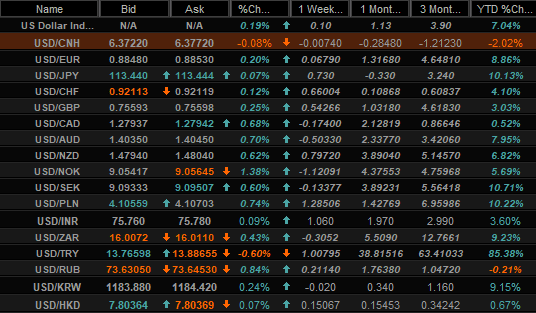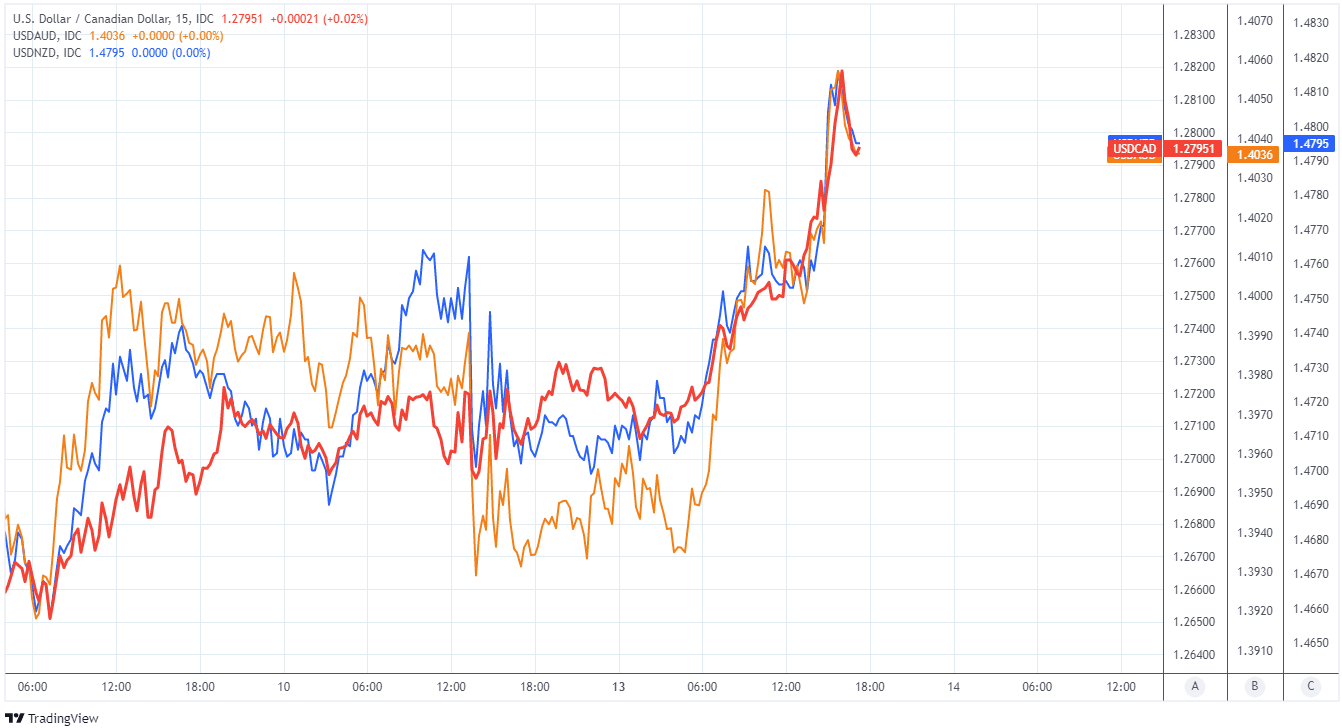Canadian Dollar: Bank of Canada's New Mandate Won't Derail the Outlook says Analyst
- Written by: James Skinner

Above: BoC Governor Macklem. Image © Bank of Canada, Reproduced Under CC Licensing
The Canadian Dollar sustained heavy losses alongside many other currencies amid a sharp U.S. Dollar rally to open the new week, which played out as the Bank of Canada (BoC) announced its new monetary policy framework agreement jointly with the Canadian government.
Canada’s government and central bank announced on Monday that “the primary objective of monetary policy is to maintain low, stable inflation over time,” but that the BoC should “continue to support maximum sustainable employment,” through a newly agreed monetary policy framework.
The new framework agreement formalises as part of the BoC’s official mandate something that it has already done for around three decades and since time it was given the task of using interest rate and other monetary policy tools to foster low and stable rates of inflation in Canada.
This is to pursue the theoretical concept of maximum sustainable employment through decisions on interest rates and other tools like quantitative easing wherever the constraints of its primary obligation to foster low and stable rates of inflation allows it to.
“The government has handed the Bank of Canada a new mandate that is mostly a case of old wine in new bottles, with the existing flexible inflation targeting with a 2% CPI goal repackaged to highlight features of that approach that, to a significant degree, were already inherent in it” says Avery Shenfeld, chief economist at CIBC Capital Markets.
The announcement came a short time after the North American open on Monday and amid a slump in the Canadian Dollar that lifted USD/CAD back above its breakeven level for 2021 and in the process ceded the Loonie’s earlier position as the best performing major currency in the G10 segment.

Above: Selected U.S. Dollar exchange rate quotes and performances over various horizons, with USD/CAD midtable.
Secure a retail exchange rate that is between 3-5% stronger than offered by leading banks, learn more.
The Loonie’s slide took place just as the U.S. Dollar rose sharply against all major currencies except the Chinese Renminbi, and after global stock and commodity markets tumbled in price action that was indicative of renewed risk aversion among investors.
Those above referenced international dynamics were more likely drivers of the Canadian Dollar’s declines rather than anything announced by the BoC and government on Monday.
“Indeed, the Finance Minister said, 'this is not a change to the framework, rather it is a recognition of existing practice.' This shows up most significantly in the BoC’s ongoing commitment to keep interest rates low until economic slack is absorbed, with indicators of labour market slack being key to that assessment,” says Josh Nye, a senior economist at RBC Capital Markets.
Nonetheless, there are some circumstances in which the new mandate could slightly change the way the BoC does monetary policy and interest rate decisions, although this would be most observable in the extent to which the bank is likely to speak in future about the job market when communicating its decisions to the public.
"Today’s announcement doesn’t change our forecast for the BoC to begin raising interest rates in April with three hikes in 2022," Nye also said.
{wbamp-hide start}
{wbamp-hide end}{wbamp-show start}{wbamp-show end}
Monday’s announcement preserves the decades-old prioritization of low and stable inflation as a goal, and came as Statistics Canada prepares to release its estimate of Canadian inflation for the month of November.
“Currently, the reopening of the global economy is associated with elevated inflation in Canada and abroad. While this is a global phenomenon, it makes maintaining a sound framework for monetary policy in Canada all the more important,” the BoC and government said on Monday.
Inflation has risen sharply in many countries this year and in most parts due to the side effects of the global effort to contain the coronavirus, which has lifted the costs of raw materials, components and labour for businesses.
But prices have risen further in countries that spent generously to tide companies and households over throughout the various periods in which restrictions on business activities and social contact were in force, such as the U.S. and Canada, and they could rise further still this quarter and in subsequent months.
Canada’s annual inflation rate rose to 4.7% in October, way above the official 2% target as well as the 1-to-3% band for permissible deviations, which is a part of why the BoC has recently begun to prepare businesses and households for a reversal of the interest rate cuts that were announced during the onset of the coronavirus crisis.
Above: USD/CAD, USD/NZD and USD/AUD shown at 15-minute intervals.






